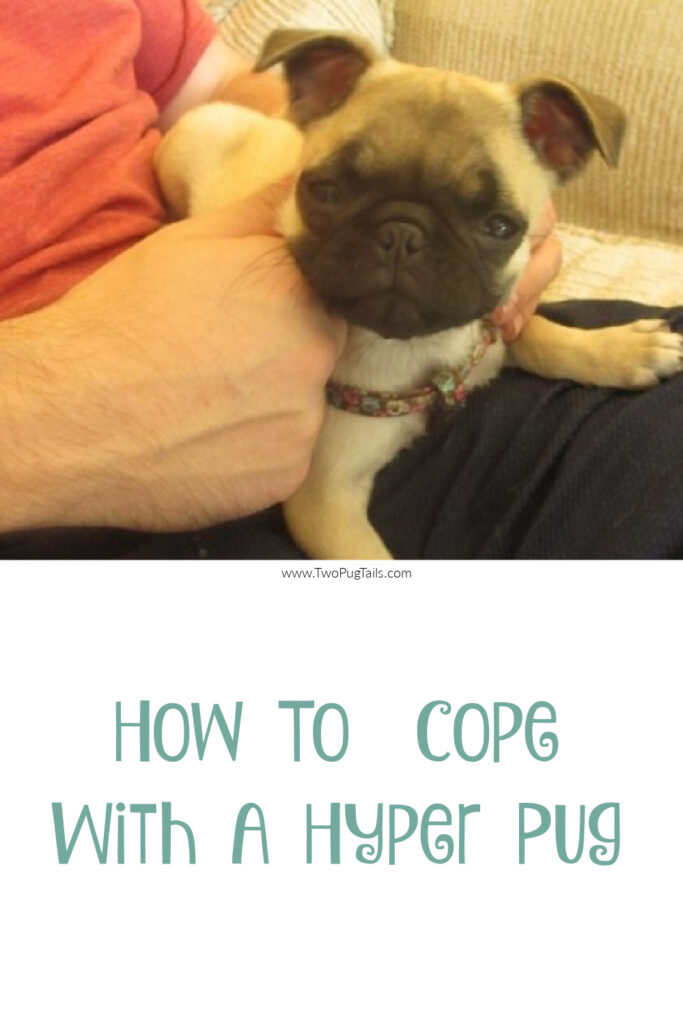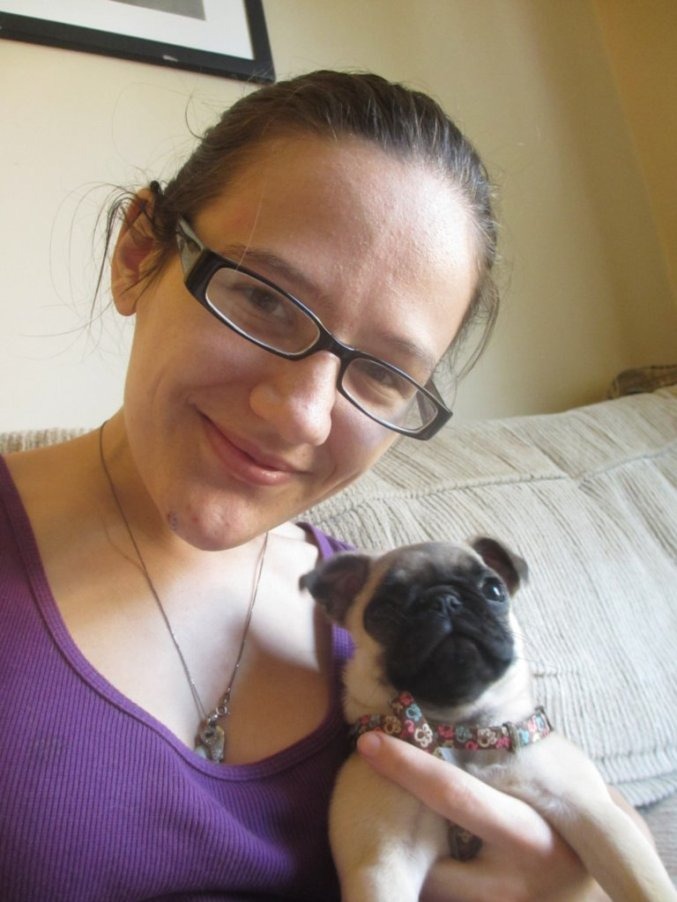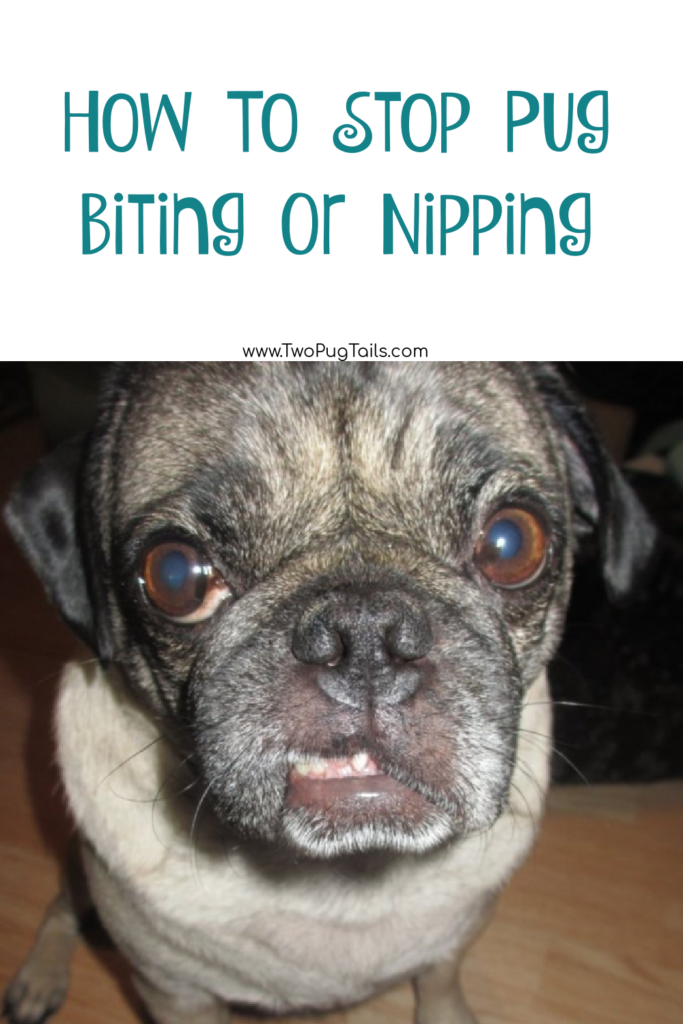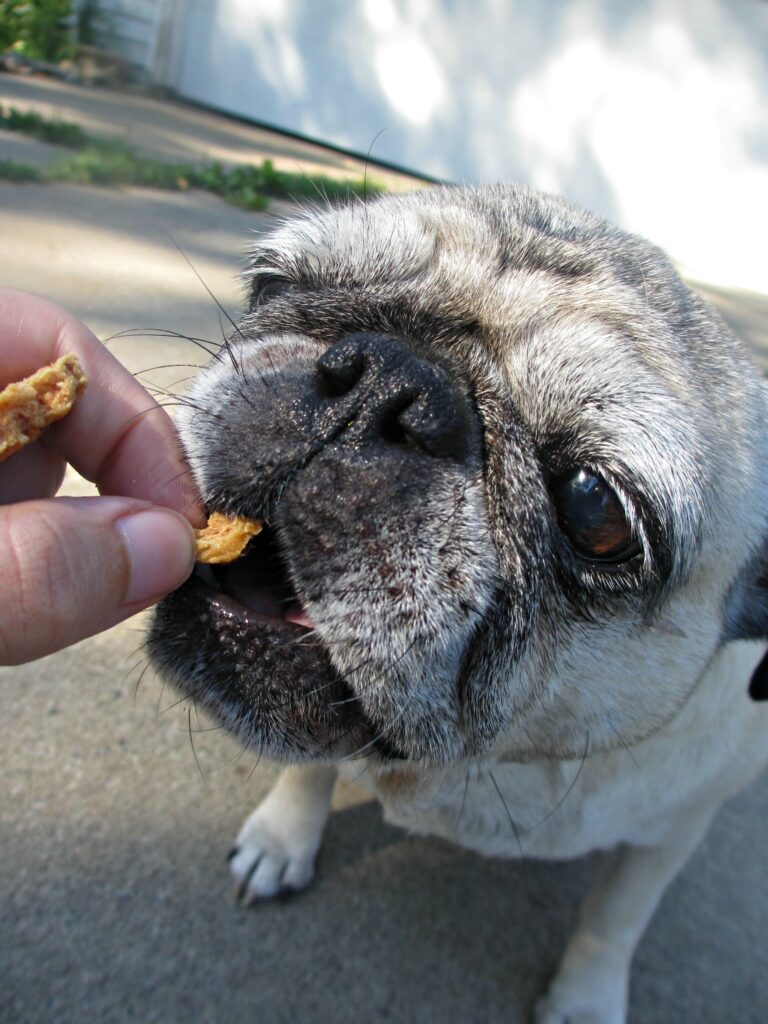If your pug puppy or adult pug is showing signs of being bow-legged, it’s understandable that you’d be concerned. In this article we’ll cover the topic to hopefully provide you with a deeper understanding and some reassurance about your pug’s little legs!
Is it normal for pug puppies to be bow-legged?
It’s completely normal for pug puppies to have a slightly bow-legged appearance during their early growth stages. As they develop, their bone structure gradually adjusts, and their legs usually straighten out naturally over time. Most pug puppies outgrow this bow-legged phase by the time they reach six to eight months of age.
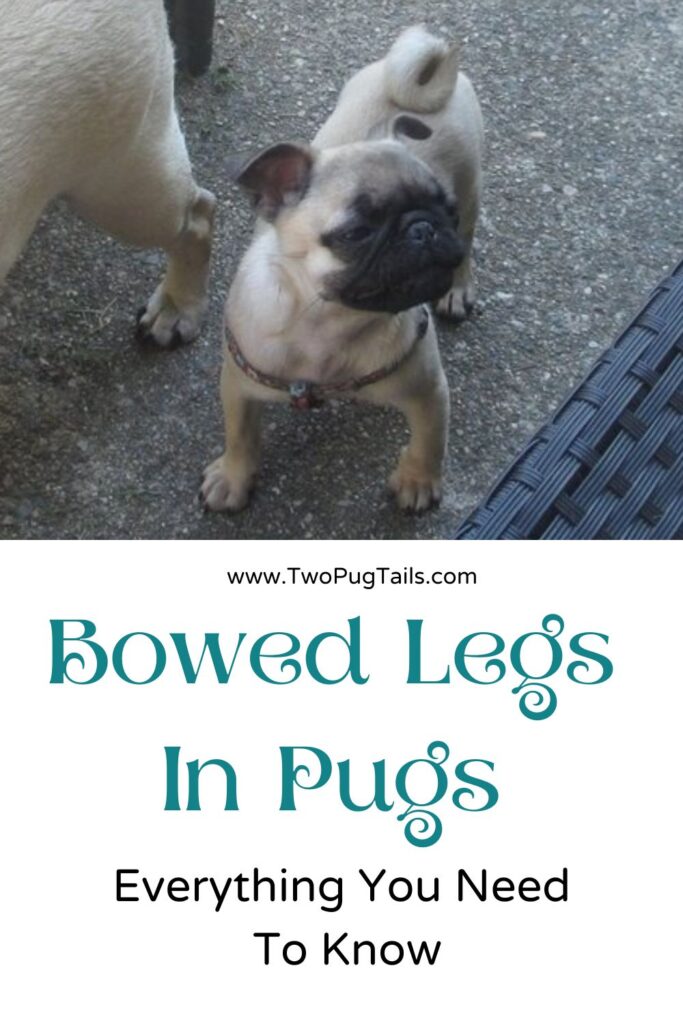
What causes bow-leggedness in pugs?
The primary cause of bow-leggedness in pugs is their rapid growth rate during puppyhood. Pug puppies have a tendency to grow quickly, and their bones may grow faster than their muscles, causing temporary bow-leggedness. However, it’s important to differentiate between natural puppy bow-leggedness and more severe skeletal conditions, such as rickets or genetic abnormalities. If you’re concerned about your pug’s leg development, consult a veterinarian for a proper diagnosis.
What Can Be Done To Correct Bow-Legged Pugs?
In most cases, intervention is not necessary as the bow-leggedness will correct itself as the pug grows. However, you can help support your pug’s healthy bone development with the following tips:
- Provide a balanced diet: Ensure your pug’s diet includes high-quality puppy food formulated for healthy bone growth. Consult your vet for specific dietary recommendations.
- Regular exercise: Encourage gentle exercise to help strengthen your pug’s muscles and support their bone development. However, avoid excessive jumping or strenuous activities that may strain their joints.
- Weight management: Pugs are prone to weight gain, which can put extra stress on their developing bones. Maintain a healthy weight for your pug by monitoring their food intake and providing regular exercise.
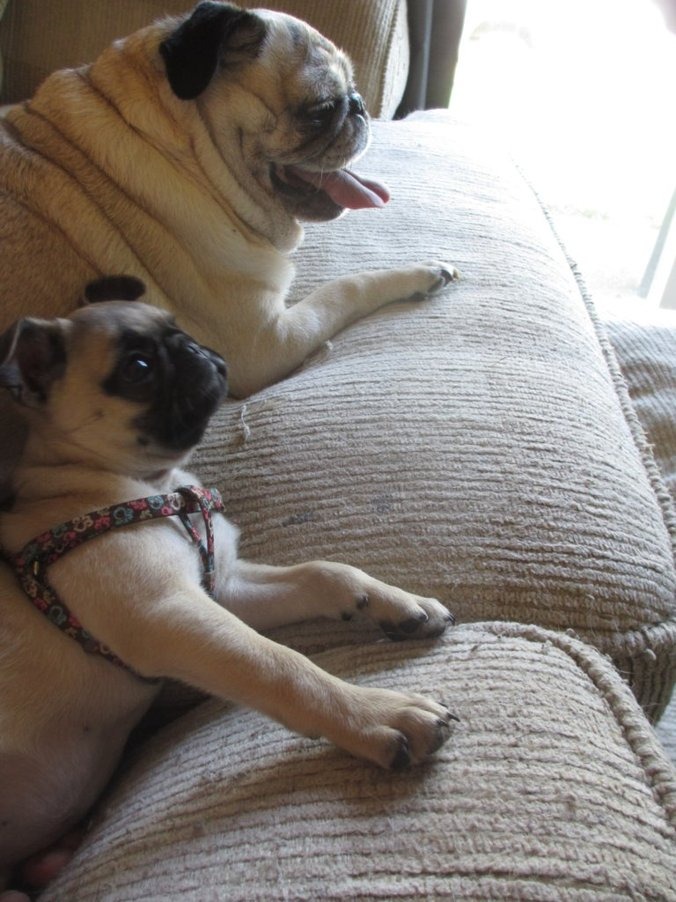
Can bow-leggedness in pugs be a sign of a more serious condition?
While mild bow-leggedness is generally normal in pug puppies, it’s essential to stay vigilant for any signs of abnormal or worsening leg deformities. If you notice persistent or severe bow-leggedness, lameness, or other concerning symptoms, consult a veterinarian. They can evaluate your pug’s condition and rule out any underlying health issues.
Are there any exercises that can help improve leg alignment?
Exercises focusing on gentle stretching and muscle strengthening can be beneficial for pug puppies. Consult your veterinarian for recommended exercises tailored to your pug’s specific needs. Remember, moderation is key, as excessive or inappropriate exercises may cause more harm than good.
How long does it take for pug puppies to outgrow bow-leggedness?
Most pug puppies outgrow their bow-legged appearance between six to eight months of age. However, every pug is unique, and individual growth rates may vary. Regular veterinary check-ups will ensure your pug’s leg development is progressing as expected.
Can pugs with severe bow-leggedness live a normal life?
Severe bow-leggedness in pugs may indicate an underlying skeletal condition that requires professional attention. With proper veterinary care and management, pugs with such conditions can still lead happy lives. Consult with a veterinarian who specializes in orthopedics to explore treatment options and provide the best possible care for your pug.
When should I be concerned about my pug’s bow-leggedness?
It’s essential to be aware of when your pug’s bow-leggedness might indicate a more serious issue. Include information about signs that may warrant concern, such as persistent limping, difficulty walking, or a worsening of the bow-legged appearance. Consult a veterinarian promptly if you notice these signs.
Can bow-leggedness in pugs be hereditary?
While bow-leggedness in pugs can sometimes have a hereditary component, it’s important to note that not all cases are directly linked to genetics. Some pugs may have a genetic predisposition to certain skeletal conditions, including bow-leggedness. Responsible breeders prioritize the health and soundness of their pugs, which can help minimize the risk of hereditary issues. If you’re considering getting a pug puppy, do thorough research and choose a reputable breeder who performs health screenings on their breeding stock.
How can I prevent bow-leggedness in pug puppies?
While you can’t entirely prevent bow-leggedness in pug puppies, there are steps you can take to support their healthy growth and development:
- Balanced Nutrition: Feed your pug a high-quality puppy food that is specifically formulated for healthy bone growth. Consult your veterinarian for dietary recommendations tailored to your pug’s needs.
- Controlled Growth Rate: Pug puppies have a tendency to grow rapidly, which can contribute to bow-leggedness. Avoid overfeeding and ensure your puppy maintains a healthy weight. Rapid growth can strain their developing bones, so monitor their growth and consult your veterinarian for guidance.
- Exercise Moderation: Pug puppies benefit from regular exercise, but excessive or high-impact activities can stress their developing bones. Provide gentle exercise and avoid activities that may put excessive strain on their joints. Consult your veterinarian for appropriate exercise guidelines.
- Veterinary Check-ups: Regular veterinary check-ups are crucial to monitor your pug’s growth and identify any potential issues early on. Your veterinarian can provide guidance and address any concerns you may have.
What other skeletal issues can pugs face?
Pugs, like many dog breeds, can be prone to various skeletal issues. Here are a few common ones to be aware of:
- Hip Dysplasia: This condition occurs when the hip joint develops abnormally, leading to discomfort and reduced mobility. Regular veterinary check-ups and appropriate exercise can help manage this condition.
- Patellar Luxation: It refers to the dislocation of the kneecap, which can cause lameness or an abnormal gait. In some cases, surgery may be necessary to correct severe patellar luxation.
- Intervertebral Disc Disease: Pugs, like other small breeds, may be at risk for intervertebral disc disease, which affects the spinal discs and can result in pain or neurological symptoms. Prompt veterinary attention is essential if you notice any signs of back or neck pain in your pug.
